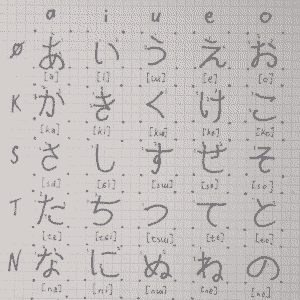How Not to Learn Japanese
Don’t learn Japanese like I did! Or rather, “Don’t learn Japanese exactly like I did. Learn from my mistakes.”
(This is not a particularly novel work. There are a million (dozen?) adequate methods and resources for Japanese learners. But you’re on my website, so you get my story.)

I’ve been learning Japanese in a zuruzuru sort of way since May 2019, on break from college. I started out right enough: I made an Anki deck of each of the hiragana and katakana characters, drew them out, and got them down pat. But even the novice learner of Japanese will correctly identify that those two syllabaries are but a small fraction of the writing system. Borrowed Chinese characters, or kanji, are the foundation of Japanese writing. They are used to represent native words, Chinese borrowings, and even compound words that are a combination of the two. There are 2,136 standardized common-use kanji, and to add insult to injury, most have multiple readings.
Mistake 1: Learning Kanji Before Grammar
“Unless you’re living in a foreign nation, the vast majority of your second-language input will be reading.”
That’s what I thought, and it might well be true, but it led me to my first mistake: Learning all the 2,136 jouyou “general use” kanji and a few extras for their English meaning before learning any grammar. The look a Japanese student in one of my lit classes gave me when I told him this master plan should have given me pause.
Nevertheless, I persisted, and after one year, I had learned 2,200 characters for their approximate meaning with English keys.
I do still recommend the method I used to learn the kanji, Heisig’s Remembering the Kanji. Learning characters by mnemonic techniques (viz. pictoral stories based on character components) leverages the skills of the adult brain to learn just as fast or faster than a native speaker does by rote repetition.
However,
Orthography is not language. If orthography is an obstacle, side-step it and learn it in parallel with grammar.